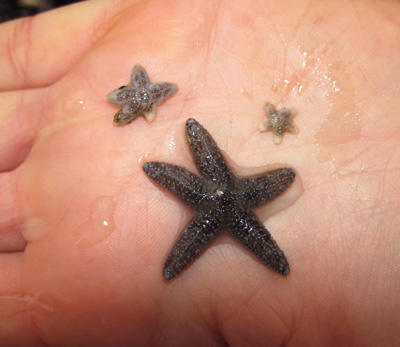Record numbers of baby Pisaster starfish are returning to Oregon and Norther California’s coastline after a mysterious wasting disease decimated whole populations over the past two years. The disease was first seen in sea star populations along the west coast of Oregon, but quickly spread between 2013 through 2014 up and down the coast from Alaska to Mexico, in some areas killing up to 95 percent of the sea stars.
The good news, data collected by Oregon State University researchers since 2014 showed an unprecedented number of baby sea stars survived during the summer and winter of 2015. “When we looked at the settlement of the larval sea stars on rocks in 2014 during the epidemic, it was the same or maybe even a bit lower than previous years,” Oregon State University marine biology professor Bruce Menge said in a statement.

“But a few months later, the number of juveniles was off the charts — higher than we’d ever seen — as much as 300 times normal.”
The disease starts by causing white lesions to show up on the arms of affected sea stars and eventually, the starfish start to disintegrate or turn into goo in less than a week. The disease was the result of a virus which spread amongs the organizms, however the cause of the outbreak is still unknown. Some have hypothesizes that abnormally warm water in the Pacific ocean causes the massive sea star die-off, while other disagree.
“There is no clear environmental cue,” Tissot said. “… (The wasting disease) has declined in intensity, but it’s still present.” Humboldt State University Marine Lab Director Brian Tissot disagrees with that hypothesis since the virus spread during colder months and didn’t expand as much during the abnormally warm 2015.
Experts say that while it’s encouraging to see the abundance of baby starfish, the disease, competition and environmental factors make their survival difficult.
[Times Colonist]
Good news for west coast starfish

Share This
Previous Article


